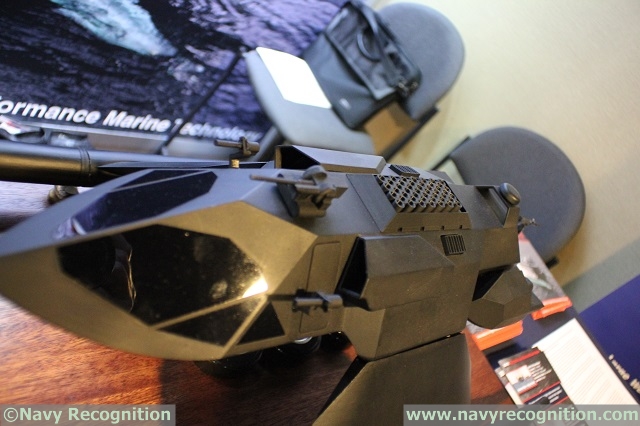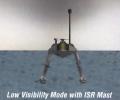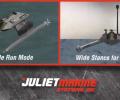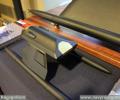 Sentry USV scale model on JMS stand during SNA 2016
Sentry USV scale model on JMS stand during SNA 2016 |
|||
Based
on the manned GHOST reconfigurable high-speed SWATH vessel, Sentry is
a highly stable USV designed to perform patrol duty for strategic assets
such as oil and gas wells, ports and ships. According to JMS, it is an
ideal platform for information, surveillance and reconnaissance (ISR)
missions. Sentry is the only fully stable small craft under 10 tons that
has the capability to remain operational in sea states no other unmanned
or manned vessel of similar size can tolerate. Gregory Sancoff, President and CEO of JMS told Navy Recognition during the show "We are talking to Japan for about 20 Sentry USVs. They would be ideal for patrol and surveillance missions in Japanese coastal area". According to Sancoff, JMS recently discussed with South Korean and Israeli officials as well, but regarding the manned GHOST vessel. The GHOST is fitted with a modular mission payload bay with numerous military configuration options. JMS CEO showed us scale model of GHOST fitted with 47 vertical launch tubes for the Lockheed Martin Nemesis missile. He said Lockheed and JMS have worked together on missile integration for the GHOST platform. The Sentry USV is fitted with a similar modular mission payload bay. |
|||
 GHOST SWATH vessel scale model showcased on JMS stand during SNA 2016
featuring 47x vertical launch tubes for Lockheed Martin Nemesis missile
GHOST SWATH vessel scale model showcased on JMS stand during SNA 2016
featuring 47x vertical launch tubes for Lockheed Martin Nemesis missile |
|||
The
Sentry USV is designed to have extremely low visual and radar signatures
while offering extended mission duration. According to a JMS brochure,
key Sentry USV features include: » Remains operational in high sea states » Improved tactical capabilities » Transportable by 10T crane, road trailer and C-17 airframe » Reduced radar and visual signatures » Diesel electric & hybrid power » Advanced stability » Multi-mission capable: ISR, Patrol, Sensor towing » Easy to use and low cost » Improved life cycle of craft and sybsystems The Senstry USV has a top speed of 35 to 40 knots, a range of 1,070 nautical miles at 15 knots and an endurance of over 30 days. Its payload is 3,000 to 5,000 pounds and it remains operational up to sea state 4. JMS CEO told us the entire system, and even the automation software is fully designed in house. In a press release, Sancoff stated "Sentry is the only known platform that will be able to perform missions in high sea states. All unmanned surface boats being used today have the fatal flaw of losing situational awareness in rough seas. An unmanned boat on an escort mission loses situational awareness as the seas are elevated to 3 feet. Its elevated sensors cannot operate in rough sea state, and the unmanned vessel loses situational awareness, resulting in a re-acquire behavior that results in vehicle vulnerability as it is doing circles in the ocean. Using the SWATH hull design, JMS set out to develop technology that allows the small GHOST Sentry platform to perform like a very large ship, always providing the stability needed to deploy sensors and weapons, and therefore operable and effective in rough weather that keeps other vessels in port." |
|||
SNA 2016: Juliet Marine Systems in Talks With Japan About New Sentry SWATH USV
- Posted On














